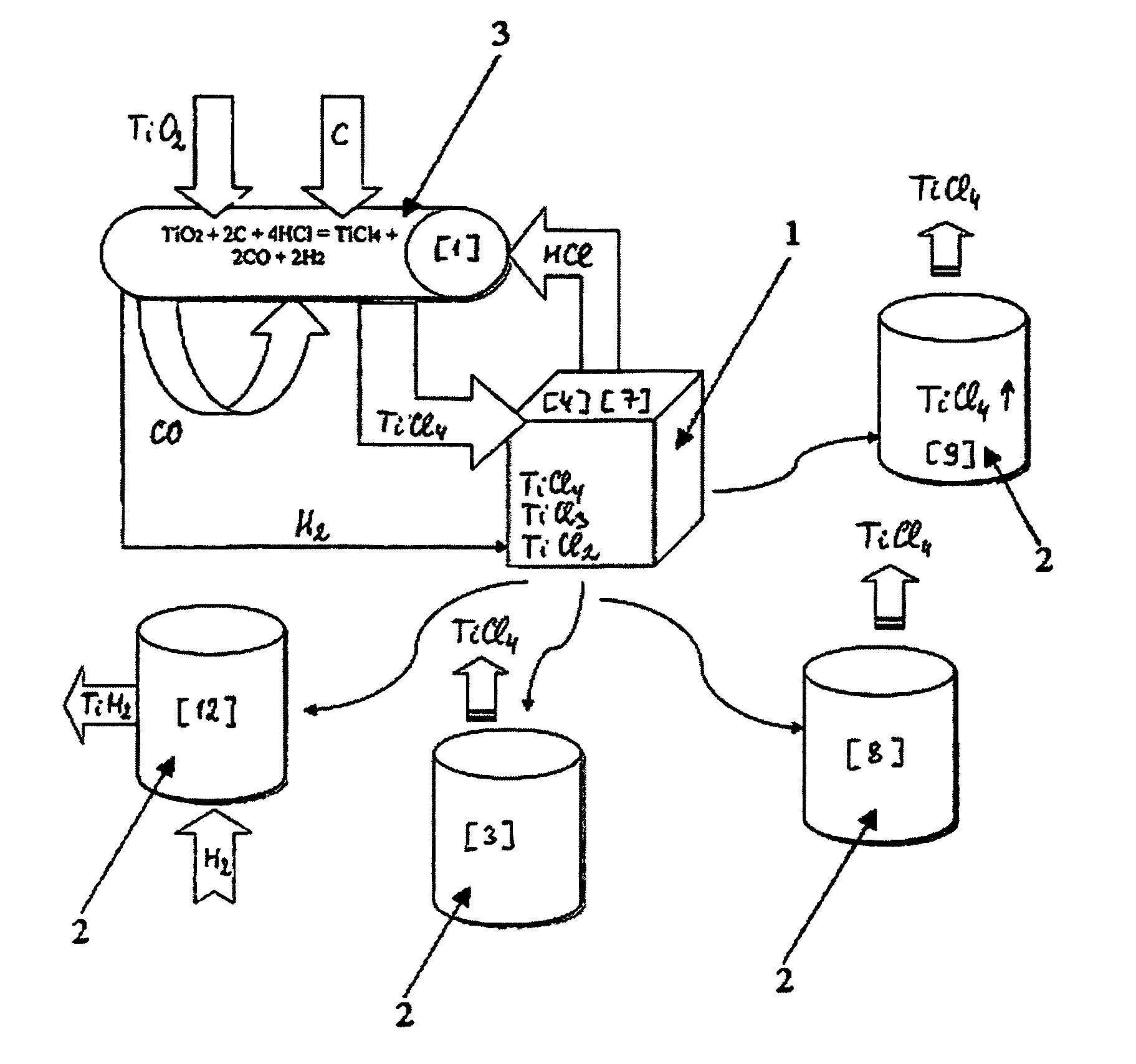Continuous and semi-continuous process of manufacturing titanium hydride using titanium chlorides of different valency
a technology of titanium chloride and titanium chloride, which is applied in the direction of inorganic chemistry, chemical apparatus and processes, non-metallic elements, etc., can solve the problems of high manufacturing cost, ineffective process, and most expensive part of technology, and achieve the effect of low manufacturing cos
- Summary
- Abstract
- Description
- Claims
- Application Information
AI Technical Summary
Benefits of technology
Problems solved by technology
Method used
Image
Examples
example
A. The reaction mass in the retort after the reduction process (regular Kroll's process) consists of the following components (calculation per 100 kg of the reaction mass):
100 kg=50 kg Ti+30 kgMg+20 kgMgCl2
B. The titanium tetrachloride is added in amount necessary:
(a) for transformation of 50 kg of titanium Ti to titanium dichloride TiCl2
Ti+TiCl4>2TiCl2
This reaction requires 190 kg of titanium tetrachloride TiCl4.
(b) for using 30 kg of magnesium Mg in the reduction reaction
TiCl4+2Mg>Ti+2MgCl2
additional 120 kg of TiCl4 are needed, and in so doing, additional 30 kg of titanium sponge will be formed in the retort.
(c) additional 114 kg of titanium tetrachloride TiCl4 are needed for transforming said new-made titanium sponge (about 30 kg) into the titanium dichloride TiCl2.
Hence the total amount of titanium tetrachloride TiCl4 added to the retort (per 100 kg of initial reaction mass) is
190+120+114=424 kg
After the completion of the step of titanium dichloride dissociation, only 80 kg ...
PUM
| Property | Measurement | Unit |
|---|---|---|
| temperature | aaaaa | aaaaa |
| particle size | aaaaa | aaaaa |
| temperature | aaaaa | aaaaa |
Abstract
Description
Claims
Application Information
 Login to View More
Login to View More - R&D
- Intellectual Property
- Life Sciences
- Materials
- Tech Scout
- Unparalleled Data Quality
- Higher Quality Content
- 60% Fewer Hallucinations
Browse by: Latest US Patents, China's latest patents, Technical Efficacy Thesaurus, Application Domain, Technology Topic, Popular Technical Reports.
© 2025 PatSnap. All rights reserved.Legal|Privacy policy|Modern Slavery Act Transparency Statement|Sitemap|About US| Contact US: help@patsnap.com



